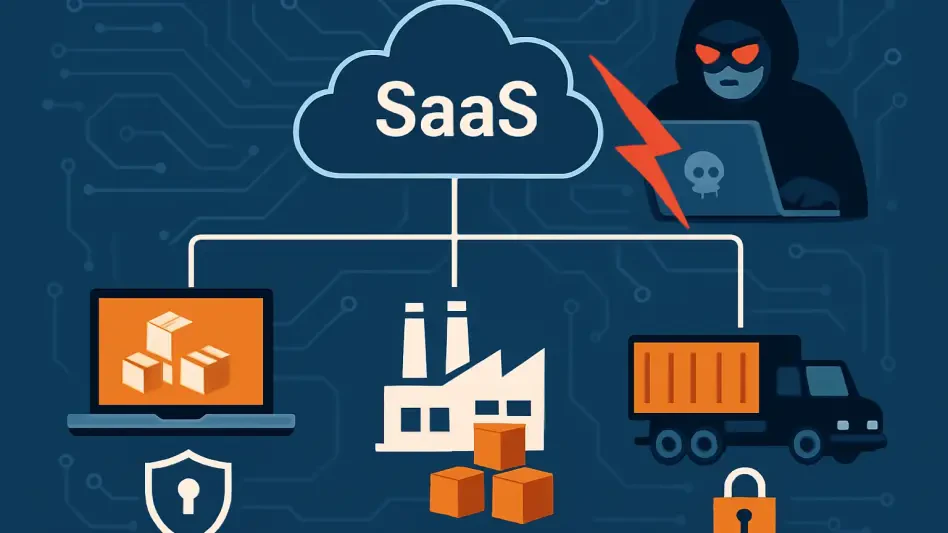In a startling revelation that has sent shockwaves through the cybersecurity community, a massive supply-chain cyberattack targeting Salesloft and its Drift chat platform has compromised over 700 organizations, including industry giants like Cloudflare, Zscaler, and Palo Alto Networks. This breach, uncovered through an in-depth investigation by a leading cybersecurity firm, highlights the fragility of interconnected Software-as-a-Service (SaaS) ecosystems. With attackers exploiting stolen authentication credentials to access sensitive data, the incident serves as a wake-up call for businesses relying on third-party integrations. The sheer scale of the attack, combined with its sophisticated execution, underscores an urgent need to reassess security protocols in an era where digital interdependence is both a strength and a vulnerability. As details continue to emerge, this event raises critical questions about how organizations can safeguard their operations against cascading risks in a hyper-connected world.
Unveiling the Breach and Its Origins
Initial Compromise and Attack Progression
The cyberattack began with a stealthy infiltration of Salesloft’s GitHub account, an intrusion that remained undetected for several months before being identified. Between March and June of this year, a threat actor, tracked as UNC6395 by Google’s Threat Intelligence Group, accessed private repositories, downloaded sensitive content, and added unauthorized users to conduct reconnaissance on both Salesloft and Drift environments. While the core Salesloft platform remained secure, the attackers shifted focus to Drift’s AWS infrastructure, a pivotal move that enabled them to steal OAuth authentication tokens. This breach of trust in a widely used integration point allowed malicious access to downstream systems, exposing the inherent dangers of interconnected applications. The prolonged undetected activity illustrates how even robust platforms can become entry points for sophisticated adversaries if monitoring and access controls are not airtight.
Exploitation of Stolen Credentials
Once the OAuth tokens were in hand, the attackers wasted no time in leveraging them for broader access, targeting integrated applications between August 8 and August 18. Primarily focusing on Salesforce instances linked to Drift, they exfiltrated sensitive business data, including names, email addresses, job titles, and support case details. This unauthorized data extraction affected hundreds of organizations, revealing how a single point of failure in a supply chain can cascade into widespread damage. The precision with which the attackers operated suggests a deep understanding of SaaS ecosystems and their vulnerabilities. Unlike traditional breaches that might target a single entity, this incident exploited the trust placed in third-party integrations, turning a useful feature into a devastating liability. Businesses must now grapple with the reality that their data may be at risk not just through direct attacks, but through the partners and tools they rely on daily.
Impacts and Responses to the Incident
Scale of Damage and Affected Entities
The magnitude of this cyberattack marks it as one of the most significant SaaS supply-chain breaches in recent memory, with over 700 organizations caught in its web. High-profile cybersecurity firms, trusted to protect digital assets, found themselves among the victims, highlighting that no entity is immune to such threats. The stolen data, while not including financial or password information, still poses risks for phishing campaigns and social engineering attacks due to the detailed personal and professional information exposed. This breach serves as a stark reminder of how interconnected systems amplify risks, where a compromise in one corner of the supply chain can ripple outward with devastating effect. As companies assess the fallout, the incident emphasizes the need for transparency in disclosing breaches and a renewed focus on securing every link in the digital chain, no matter how small it may seem.
Swift Containment and Mitigation Efforts
Upon discovering the breach on August 28, Salesloft acted decisively to limit further damage, taking the Drift platform offline and isolating its infrastructure to prevent additional unauthorized access. Engaging a renowned cybersecurity firm for a thorough investigation, the company also rotated all compromised credentials to block the attackers’ pathways. The technical separation between Salesloft and Drift environments proved crucial in containing the incident, preventing lateral movement that could have worsened the impact. Additionally, actionable guidance was provided to partners, urging them to revoke API keys for third-party integrations with Drift, while a list of Indicators of Compromise (IOCs), including malicious IP addresses, was shared to aid in detecting suspicious activity. This rapid response, while commendable, also sheds light on the importance of preemptive measures and continuous monitoring to catch such threats before they escalate to catastrophic levels.
Lessons for Future SaaS Security
Reflecting on the aftermath, the incident revealed critical gaps in how SaaS ecosystems manage third-party integrations and authentication mechanisms. It became evident that while these integrations drive operational efficiency, they also create vulnerabilities that can be exploited with severe consequences if not properly secured. The need for robust access controls and real-time monitoring of authentication tokens emerged as a non-negotiable priority for organizations of all sizes. Looking back, the response efforts underscored the value of swift action and collaboration with expert investigators to contain damage. As discussions around this breach unfolded, they likely spurred a broader industry dialogue on enhancing security protocols. Moving forward, businesses were encouraged to reassess their reliance on interconnected platforms, ensuring protective measures kept pace with innovation to prevent similar incidents from recurring in an increasingly complex digital landscape.








